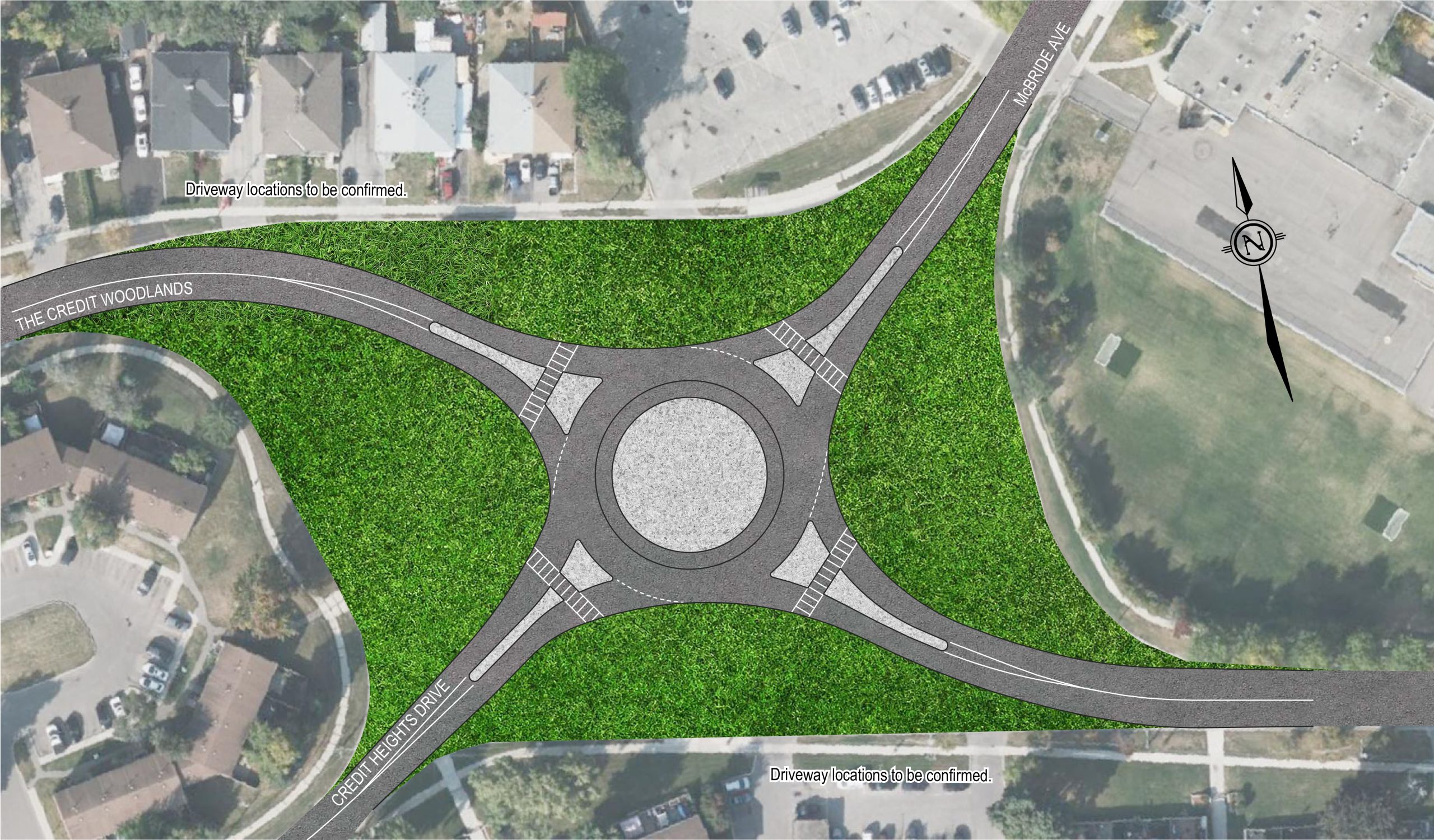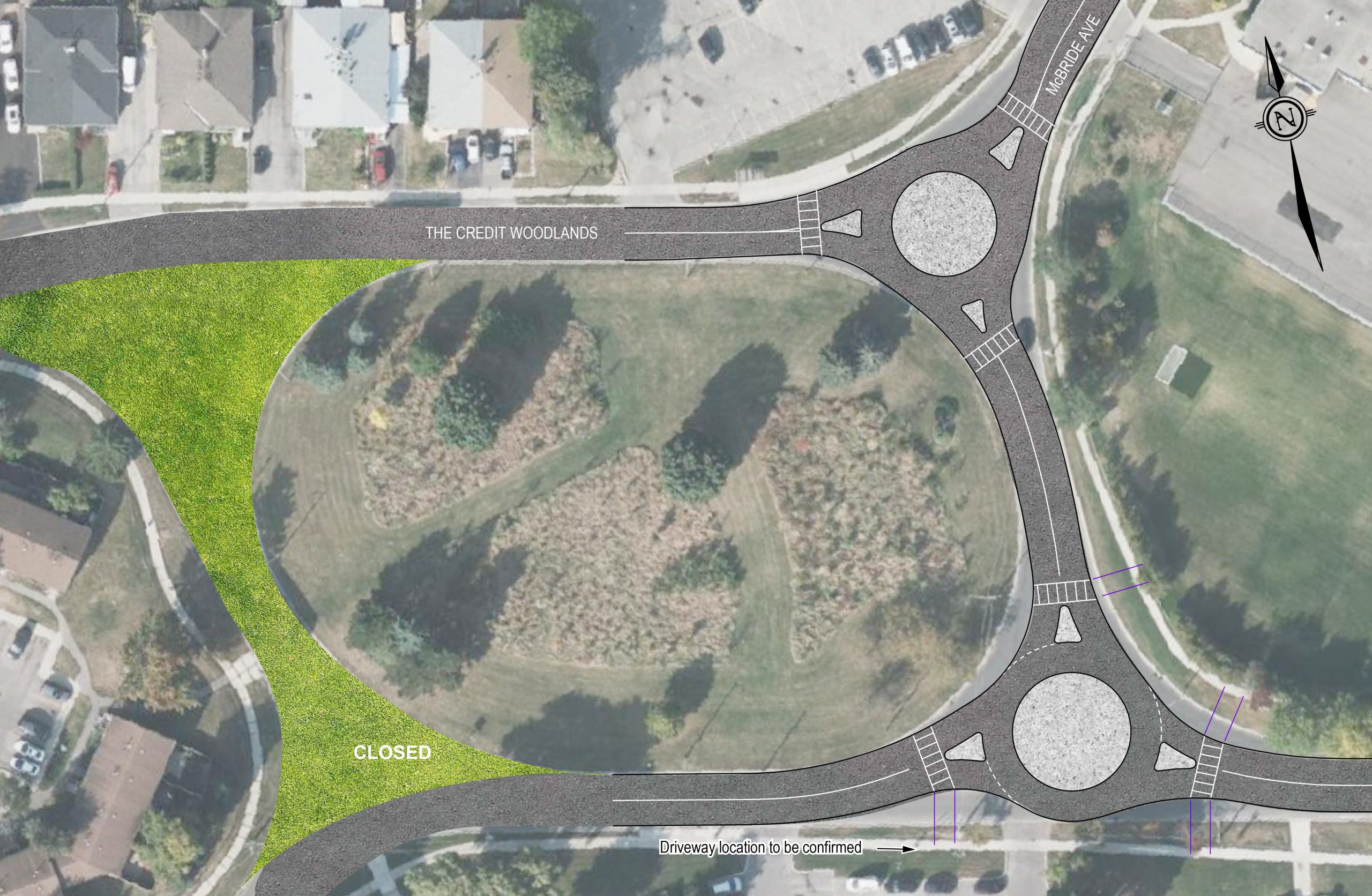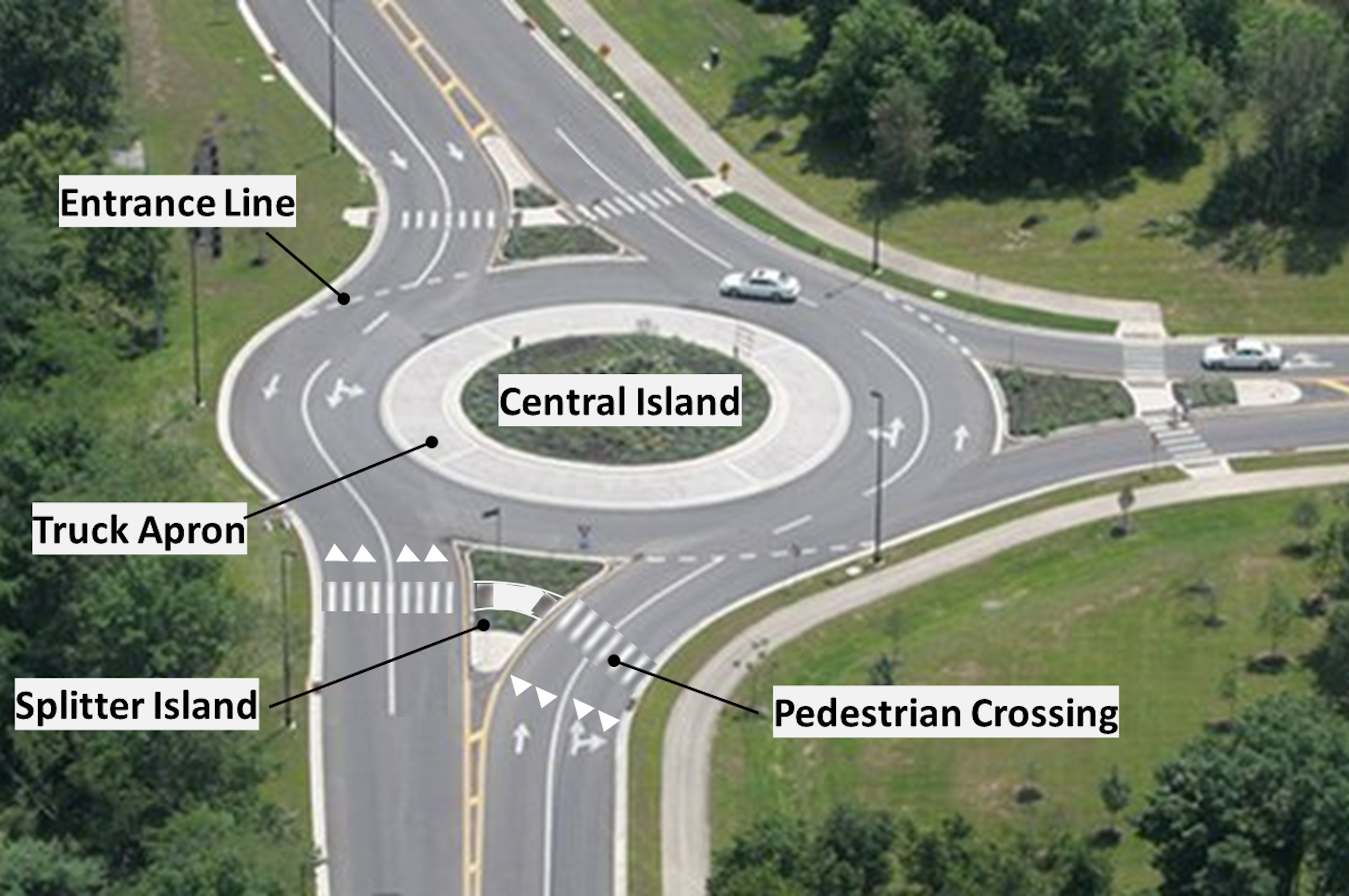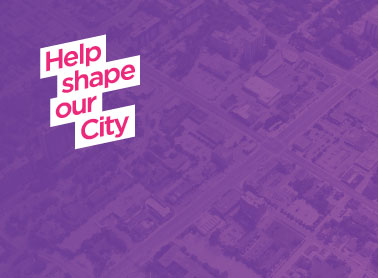Design alternatives
The City and its engineering consultant completed a detailed analysis that determined that the roadway around Bert Fleming Park cannot be restored to its previous state. The previous configuration does not meet today’s road design guidelines and creates issues related to speeding, operational confusion, pedestrian crossing and access. You can read the complete report of the review.
For these reasons, we explored several potential design alternatives to address the concerns and improve the project area. Design alternatives are different options for completing an infrastructure project.
A total of 10 design alternatives were considered. Out of the design alternatives considered, two potential designs aligned close to the feedback we got from residents:
- Roundabout that meets modern-day design guidelines
- Modification of the original configuration with two mini-roundabouts
Roundabout design alternative
This alternative features a roundabout that meets modern-day design guidelines. This includes specific design and traffic control features, such as:
- Large entry angles
- Crosswalks
- Splitter islands
- Parking restrictions
- No driveway access
This design meets modern standards, would make the road safer and slow down cars when they enter and exit the road around Bert Fleming Park. However, it would also mean:
- Critical impacts to vehicular access for several existing residents make this alternative not technically feasible
- Loss of Bert Fleming Park, including the opportunity to redevelop the park to benefit the community
- Significant and costly modifications to the road, related infrastructure and utilities

Modified original configuration with two mini-roundabouts design alternative
This alternative features a modification of the original configuration, introducing two-way traffic and two mini-roundabouts on the east leg. This modification uses the same road right-of-way and improves connectivity and traffic flow more efficiently by merging four partial-movement intersections into two full-movement mini-roundabout intersections. A mini-roundabout includes all the modern safety requirements of a full-size roundabout but fits into a circular diameter of 27 metres or less.
This design offers many advantages:
- Makes the road safer
- Reduces the number of vehicles speeding
- Yield control prevents the need for every vehicle to come to a full stop unless necessary
- Keeps the existing right-of-way without widening the current roadway
- Restores free-flow traffic
- Does not have the access restrictions of the roundabout design
- Provides dedicated pedestrian crossings
- Restores the neighbourhood’s character to resemble its original state through changes such as removing coloured pavement
- Provides everyone with access to Bert Fleming Park, which could be developed in the future to benefit the community

Selected design
The City has chosen the modified original configuration with two mini-roundabouts design alternative after completing a thorough review of the benefits and potential impacts on the community. This is the only design alternative that is technically feasible and meets the criteria developed from resident feedback. More information about the selected design will be provided as the project progresses.
Questions and answers
To determine if it’s safe to maintain the original roadway as it is, we had an independent review done. The results of the review (completed by non-City-related professionals) showed that the design doesn’t meet today’s safety standards and several other concerns:
- The original configuration allows vehicles to travel at high speeds, making the roadway less safe to use.
- The lack of controlled crossing facilities for pedestrians and cyclists makes crossing the street inaccessible.
- Although there are yield signs, because the road is wide enough for two lanes, drivers don’t get clear visual cues to yield to cars already in the rotary when entering.
- Drivers in the rotary may not have a clear enough view to see cars going in and out of the driveways that open directly into the rotary.
- Drivers who don’t know the area well might exit a driveway, into the rotary, thinking there is two-way traffic and end up driving the wrong way.
These are the main features of a roundabout:

Central Island
A raised area in the centre of the roundabout that the roadway travels around. Central islands are not always circular in shape. Engineering guidelines allow mini-roundabouts to accommodate all types of traffic, including larger trucks and buses.
Splitter island
Raised or painted areas between the entry and exit lanes of an intersection that separate traffic. They make cars slow down and can be designed to give pedestrians a safer, two-stage crossing.
Truck apron
A flat, hard-surfaced part of a central island next to the main road inside the circulatory roadway, with a low-curb that trucks can drive over if needed. They can also be placed on the outside of the circulatory roadway at entrances and exits.
Entrance line
Dashed line that marks the point of entry into the circulatory roadway.
Pedestrian crossings
Pedestrian crosswalks in roundabouts are placed before cars enter and after they exit the roundabout. The splitter island is designed to let pedestrians safely cross through. They should be accessible and easy to use with signs, slopes and textured surfaces.
The main differences between a roundabout, mini-roundabout, traffic circle and rotary are the size, the speed vehicles can travel, and what they’re use for.
Roundabout
- A modern circular intersection where vehicles go counter-clockwise around a central island.
- Vehicles entering the roundabout must yield to traffic already in the roundabout.
- Has specific geometric design and traffic control safety features that improve safety and traffic flow.
Mini-roundabout
- A smaller roundabout but with fully traversable central and splitter islands. This means that large vehicles (such as buses and large trucks) can safely drive over parts of the central and splitter islands when going through the mini-roundabout.
- Commonly used tight spaces or in low-speed urban environments, where a typical single-lane roundabout can’t be placed.
Traffic circle
- An old-style circular intersection typically constructed in urban areas.
- Often equipped with traffic signals or stop signs to control one or more entries, or to facilitate high pedestrian volumes.
- Statues or monuments are often located within the large central island.
- Typically have smaller entry angles that allow for higher speeds at entry.
- May have splitter islands, and may permit parking in the circle.
Rotary
- A large circular intersection designed for high-speed traffic.
- Often has multiple lanes and long entry and exit points, making them larger and thus increasing collision risks. Some rotaries can be up to 100 metres in diameter (the Bert Fleming Park rotary average diameter was nearly 110 metres).
- Some rotaries may prioritize drivers entering the rotary, causing congestion and safety concerns. Historically, the Bert Fleming Park rotary has given priority to entering traffic at some (but not all) of the entrances, which introduces safety concerns, especially for drivers unfamiliar with the area.

